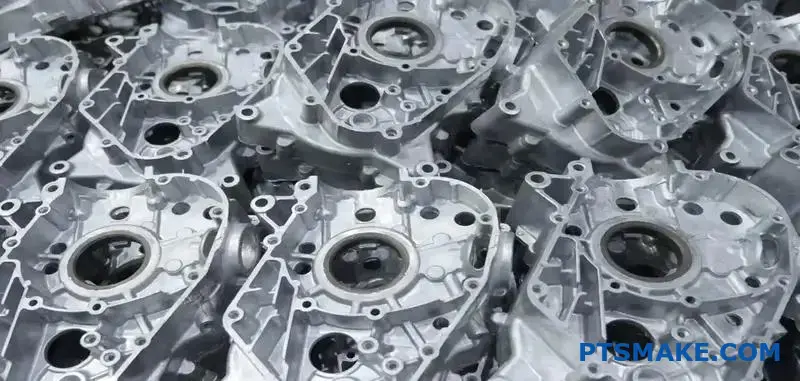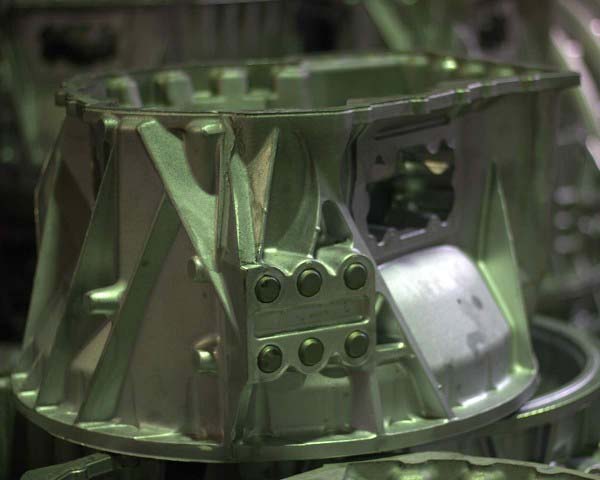Comprehending Aluminum Casting: A Comprehensive Guide to Its Applications and advantages
Aluminum casting is a procedure that transforms molten aluminum right into solid forms via various strategies. This technique provides notable benefits, such as light-weight toughness and rust resistance. It discovers applications in numerous industries, showing its adaptability. Nevertheless, comprehending the details of aluminum casting and its best techniques can considerably influence the top quality of the end product. Discovering these elements reveals the true capacity of aluminum casting in modern-day production.
The Basics of Aluminum Casting
Aluminum casting is a manufacturing process that transforms liquified aluminum right into solid objects through different strategies. This process begins with home heating aluminum until it reaches its melting point, permitting it to flow into molds. There are a number of approaches of aluminum casting, including sand casting, die casting, and financial investment casting, each ideal for various applications based on design complexity and manufacturing volume.
In sand casting, molds are created using sand, giving adaptability for elaborate shapes. Die casting involves forcing liquified aluminum into a steel mold and mildew under high stress, causing exact and repeatable parts. Financial investment casting, on the various other hand, utilizes a wax pattern that is covered with ceramic to create comprehensive components.
After the aluminum cools down and solidifies, the molds are gotten rid of, disclosing the ended up items. This casting procedure is integral in different sectors, including vehicle, aerospace, and customer products, allowing the development of long lasting and lightweight components.
Advantages of Aluminum Casting
One of the key benefits of aluminum casting depends on its ability to create lightweight yet solid parts. This distinct mix makes aluminum an optimal selection for different sectors, including automotive, aerospace, and customer items. The fundamental deterioration resistance of aluminum also improves the durability of the actors components, prolonging their life-span and lowering the requirement for upkeep.
Furthermore, aluminum casting enables detailed layouts and intricate geometries, which can cause more effective and cosmetically pleasing items. The material's outstanding thermal and electrical conductivity better increases its applications, specifically in electronic devices and heat exchangers.
Additionally, aluminum recycling is highly effective, adding to environmental sustainability and minimizing manufacturing expenses. Overall, the advantages of aluminum casting placement it as a flexible and useful remedy for producers looking for to optimize performance while lessening weight and source usage.
Typical Approaches of Aluminum Casting
While various techniques exist for aluminum casting, each technique uses distinct benefits customized to certain applications. The most common approaches consist of sand casting, die casting, and financial investment casting.
Sand casting, recognized for its versatility, utilizes sand molds to produce complicated shapes and is suitable for both large and small manufacturing runs. Pass away casting, on the various other hand, utilizes high-pressure injection of liquified aluminum into steel molds, leading to smooth surface areas and exact dimensions, making it suitable for automation.
Financial investment casting, usually referred to as lost-wax casting, entails producing a wax pattern coated with a ceramic shell. Aluminum Foundry. When the wax is disappeared, molten aluminum is poured right into the cavity, generating intricate styles and superb surface area coatings
Each of these methods plays an essential role in the aluminum casting landscape, supplying certain benefits that accommodate varying manufacturing requirements and manufacturing scales.
Applications Throughout Industries
The flexibility of aluminum casting approaches enables a large range of applications throughout different markets. In the automotive field, light-weight aluminum parts boost fuel efficiency and performance, contributing to the growing demand for electrical vehicles. Aerospace sectors utilize aluminum spreadings for their strength-to-weight ratio, making certain safety and toughness in aircraft manufacturing.
The building sector gain from aluminum casting via building elements and structural components that resist rust and need minimal upkeep. Furthermore, customer electronics makers use aluminum spreadings for structures and real estates, stabilizing aesthetics with functionality.
In the marine market, aluminum castings are preferred for watercrafts and marine devices as a result of their try this site resistance to saltwater rust. The medical area uses aluminum spreadings in medical tools and devices, making certain precision and reliability. Generally, aluminum casting's versatility enables it to fulfill the diverse needs of numerous fields, making it a vital manufacturing procedure.
Ideal Practices for Successful Aluminum Casting
Effective aluminum casting counts on a combination of cautious preparation, exact implementation, and detailed high quality control. Originally, picking high-grade aluminum alloys is important, as they straight influence the casting's buildings and performance. Correct mold layout is critical, assuring that it suits thermal contraction and minimizes issues.
During the melting procedure, preventing and keeping the correct temperature level contamination are crucial to attaining a consistent alloy. Furthermore, using reliable putting techniques can enhance the filling of molds, lowering the probability of air pockets or additions.
Post-casting, executing thorough examination approaches, such as aesthetic analyses and non-destructive testing, guarantees that flaws are determined early. Furthermore, using strenuous quality assurance actions throughout the procedure aids preserve consistency and reliability in the end products. By adhering to these ideal methods, makers can considerably boost the success and performance of their aluminum casting procedures.
Often Asked Questions
What Safety and security Steps Should Be Taken Throughout Aluminum Casting?

Just How Can Defects in Aluminum Castings Be Minimized?
Problems in aluminum castings can be reduced through careful mold style, appropriate temperature control, guaranteeing clean metal, using suitable putting techniques, and conducting extensive assessments to determine and deal advice with issues before finalizing the casting procedure.

What Is the Environmental Influence of Aluminum Casting?
The environmental impact of aluminum casting consists of energy-intensive procedures, greenhouse gas discharges, and resource removal worries. Improvements in reusing and sustainable practices can alleviate these effects, promoting a more environmentally friendly technique to aluminum production.
Can Aluminum Casting Be Recycled?
Yes, aluminum casting can be recycled efficiently. The reusing procedure requires substantially less power contrasted to main aluminum manufacturing, making it an ecologically pleasant choice that adds to resource preservation and lowered carbon emissions.
What Are the Costs Related To Aluminum Casting Processes?
Expenses connected with aluminum casting procedures include product costs, labor, tools maintenance, power consumption, and mold construction. These factors can vary substantially based upon production range, complexity of styles, and details manufacturing methods used.
Aluminum view publisher site casting is a process that transforms liquified aluminum right into strong forms with numerous techniques. Aluminum casting is a manufacturing procedure that changes liquified aluminum into solid items via various techniques. While different methods exist for aluminum casting, each approach supplies unique advantages customized to particular applications. The environmental influence of aluminum casting consists of energy-intensive processes, greenhouse gas emissions, and source removal concerns. Costs associated with aluminum casting procedures consist of material costs, labor, tools maintenance, energy consumption, and mold and mildew fabrication.